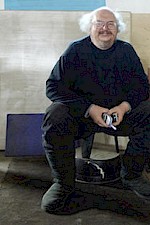Sub/Sat or Full-Range: Which is Better for Music?
I am often asked this question and the answer is not simple. My background is music reproduction, first at Tech Hifi and now at Ohm. Throughout, my goal has always been to create an enjoyable music experience in the home. At Tech we also tried to make the process fun. Luckily, I have always lived where live music was readily available: Boston’s coffee shops and jazz club plus Berklee College of Music and the magnificent Boston Symphony Hall. In New York, we have it all. Live music is my reference standard.
At Ohm, we make both full-range and subwoofer/satellite systems. With full-range systems, it is up to the designer to have all the parts working together correctly. With sub/sat systems, we have learned the placement of the subwoofer in relation to the satellites and listening positions is critical to accurate music reproduction. For the very best reproduction over the entire listening area, it takes two subwoofers. Each has a satellite sitting on top of it. This way the subwoofer and matching satellite are equal distance from each listener, making it possible to play together properly throughout the room. This is not all it takes for perfection but it is required. If you cannot have two subs with a sat on top of each, you are better off with the full-range system.
What advantages are there to a sub/sat setup?
If it is primarily a music system that is occasionally used for movies and is being powered by an A/V processer, you can have a much smaller amplifier and still have the same maximum output and dynamic range. This is because the processor removes the bass information and sends the satellites’ amplifiers only the signal they need. The subwoofer has its own amplifier driven from the subwoofer-out of the processor. Additionally, the satellites can usually be much smaller than the full-range system for the same output above 80 Hz. There is a limit to how small the satellites can be. They do need to go down to 80 Hz as THX and Dolby Digital specify. If the satellite is so small, it must be crossed over higher and this usually adversely affects the voice reproduction. Amplified subwoofers are usually equalized in the bass to go deeper than a similar sized passive speaker. In this way, you may save on size. Smaller amplifiers and smaller speakers can usually save you money to invest in the powered subwoofers.
What advantages are there to a full-range setup?
Only a straight 2-channel stereo amplifier is needed to get the best performance. Often a smaller foot print is needed for the full-range compared to the subwoofer. If it is a Home Theater system, a single powered subwoofer can usually be placed anywhere while music may sound best when played through just the full-range system.
So, both can be better, depending on the application, cosmetics and costs.
When cost is no object, our Walsh F-5015 combines in one cabinet an XtremeXcursion(tm) subwoofer with its own 500 watt amp and a satellite version of our top-of-the-line Walsh 5000 for only $11,000 per pair.
Enjoy & Good Listening!
John
Subscribe to Ohm News & Views to get the latest posts in your inbox
John Strohbeen Author
John Strohbeen was the President and Chief Engineer of Ohm Acoustics from 1978-2023.


